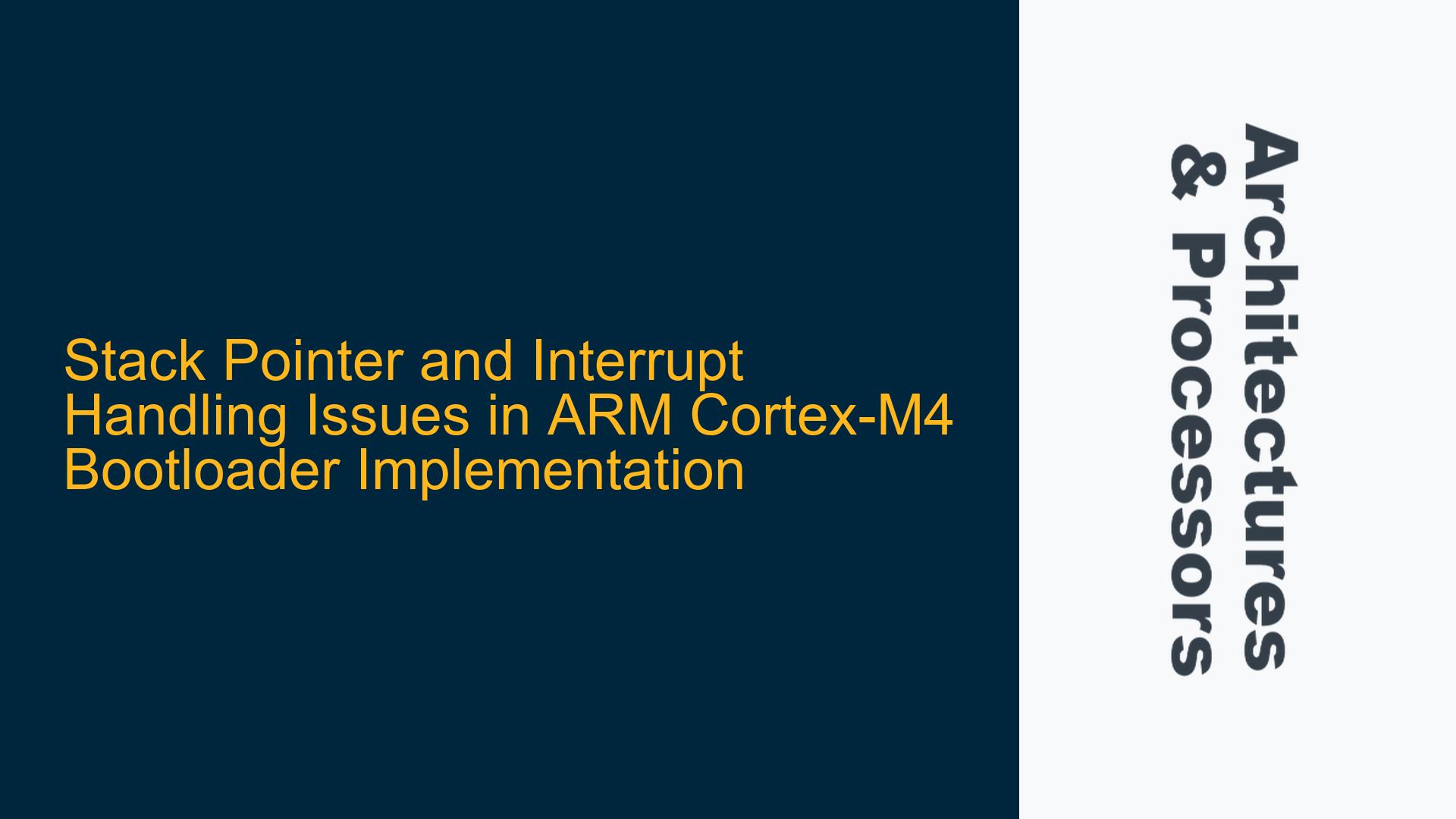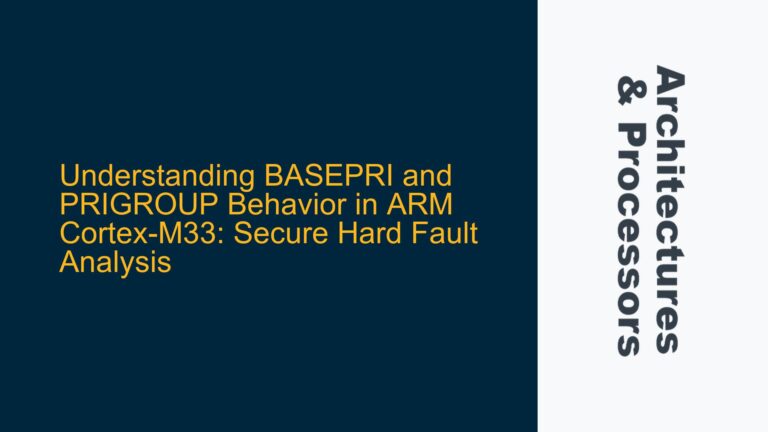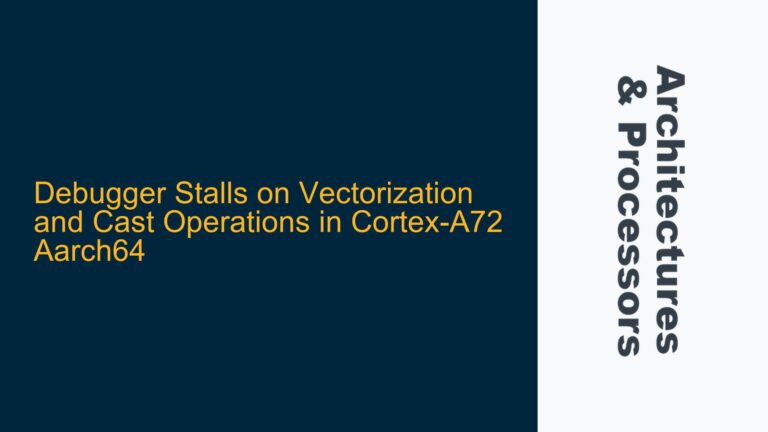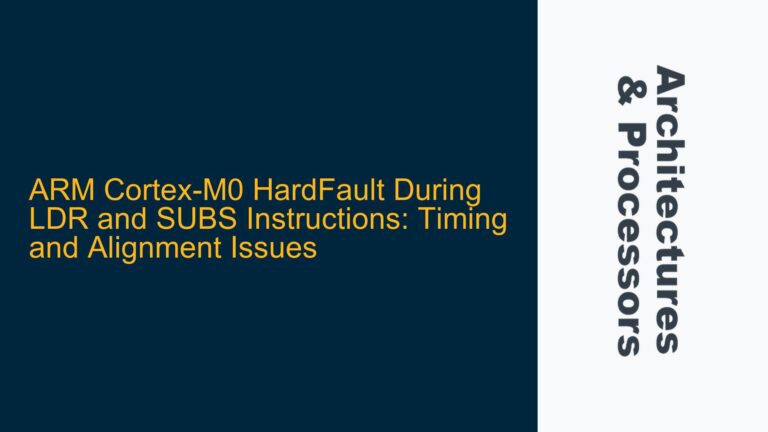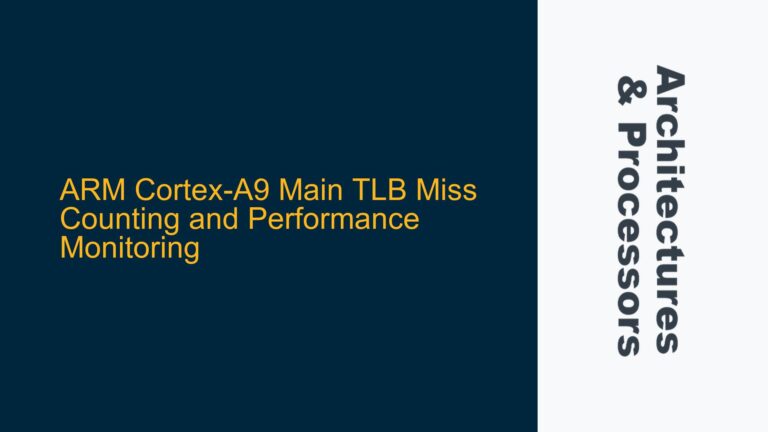ARM Cortex-M4 Bootloader Stack Pointer Initialization and Interrupt Handling
The core issue revolves around the improper initialization of the stack pointer and interrupt handling mechanisms when transitioning from a bootloader to the main application firmware on an ARM Cortex-M4 microcontroller. The bootloader is designed to update the firmware of a GD32E103 microcontroller, but after loading the main application, the system fails to execute correctly. The problem manifests as a failure to start the main application after a reset, with symptoms pointing to stack pointer misconfiguration and interrupt handling issues.
The bootloader code provided attempts to disable interrupts, clear pending interrupts, set the Main Stack Pointer (MSP), relocate the Vector Table Offset Register (VTOR), and jump to the main application’s reset handler. However, the system does not proceed as expected, indicating potential issues with the stack pointer initialization, interrupt handling, or VTOR relocation.
Stack Pointer Misalignment and Interrupt Context Corruption
The primary causes of the issue can be traced to the following areas:
1. Stack Pointer Initialization: The bootloader sets the MSP using __set_MSP(*((volatile uint32_t*) USER_APPLICATION_BASE_ADDRESS)). This assumes that the first word at the base address of the main application contains the correct initial stack pointer value. If this value is incorrect or misaligned, the stack pointer will point to an invalid memory region, leading to a crash or undefined behavior when the main application attempts to use the stack.
2. Interrupt Handling During Transition: The bootloader disables interrupts using __disable_irq() and clears pending interrupts using NVIC->ICPR[i] = 0xFFFFFFFF. However, if any interrupts are pending or enabled during the transition to the main application, they could trigger immediately after the jump, leading to an unstable system state. Additionally, the SysTick timer is disabled, but if the main application relies on SysTick for timing, this could cause issues.
3. VTOR Relocation Timing and Synchronization: The bootloader relocates the VTOR to 0x08002800 using SCB->VTOR = 0x08002800. While the code includes __DMB() and __DSB() instructions to ensure memory barriers, the timing of the VTOR relocation relative to the jump to the main application could still cause issues. If the VTOR is not correctly set before the main application starts executing, the processor may fetch incorrect exception vectors, leading to a crash.
4. Interrupt Priority and Configuration Mismatch: The main application may have different interrupt priorities or configurations compared to the bootloader. If the bootloader does not fully reset the interrupt configuration before jumping to the main application, this could lead to unexpected behavior, especially if the main application assumes a default or specific interrupt state.
Correcting Stack Pointer Initialization and Ensuring Proper Interrupt Handling
To resolve the issue, the following steps should be taken:
1. Verify Stack Pointer Initialization: Ensure that the first word at the base address of the main application (USER_APPLICATION_BASE_ADDRESS) contains the correct initial stack pointer value. This value should point to a valid memory region, typically the top of the RAM allocated for the main application. The bootloader should validate this value before setting the MSP.
uint32_t initial_sp = *((volatile uint32_t*) USER_APPLICATION_BASE_ADDRESS);
if (initial_sp < RAM_START || initial_sp > RAM_END) {
// Handle error: Invalid stack pointer value
}
__set_MSP(initial_sp);
2. Fully Reset Interrupt State: Before jumping to the main application, ensure that all interrupts are disabled, and all pending interrupts are cleared. Additionally, reset the interrupt priorities to their default values. This ensures that the main application starts with a clean interrupt state.
__disable_irq();
for (int i = 0; i < 8; i++) {
NVIC->ICER[i] = 0xFFFFFFFF; // Disable all interrupts
NVIC->ICPR[i] = 0xFFFFFFFF; // Clear all pending interrupts
NVIC->IP[i] = 0x00000000; // Reset interrupt priorities
}
3. Ensure Proper VTOR Relocation: Relocate the VTOR to the correct address (0x08002800) and ensure that the memory barriers are correctly placed to prevent any out-of-order execution issues. The __DSB() and __ISB() instructions should be used to ensure that the VTOR relocation is fully completed before the jump to the main application.
__DMB(); // Ensure all memory accesses are complete
SCB->VTOR = 0x08002800; // Relocate VTOR
__DSB(); // Ensure VTOR relocation is complete
__ISB(); // Flush the pipeline to ensure new VTOR is used
4. Jump to Main Application Reset Handler: Use the correct method to jump to the main application’s reset handler. Ensure that the address of the reset handler is correctly fetched from the vector table and that the jump is performed without any intermediate steps that could corrupt the stack or registers.
uint32_t reset_handler_address = *((volatile uint32_t*) (USER_APPLICATION_BASE_ADDRESS + 4));
void (*reset_handler)(void) = (void*)reset_handler_address;
reset_handler(); // Jump to main application reset handler
5. Validate Main Application Configuration: Ensure that the main application is compiled and linked with the correct memory layout, including the correct stack size and heap size. The linker script should define the memory regions correctly, and the startup code should initialize the stack pointer and other critical system registers.
6. Debugging and Validation: Use a debugger to step through the bootloader and main application startup code. Verify that the stack pointer is correctly set, the VTOR is correctly relocated, and the reset handler is correctly called. Check the NVIC registers to ensure that all interrupts are disabled and pending interrupts are cleared.
By following these steps, the bootloader should correctly initialize the stack pointer, handle interrupts, and transition to the main application without issues. This ensures a stable and reliable firmware update process on the ARM Cortex-M4 microcontroller.
